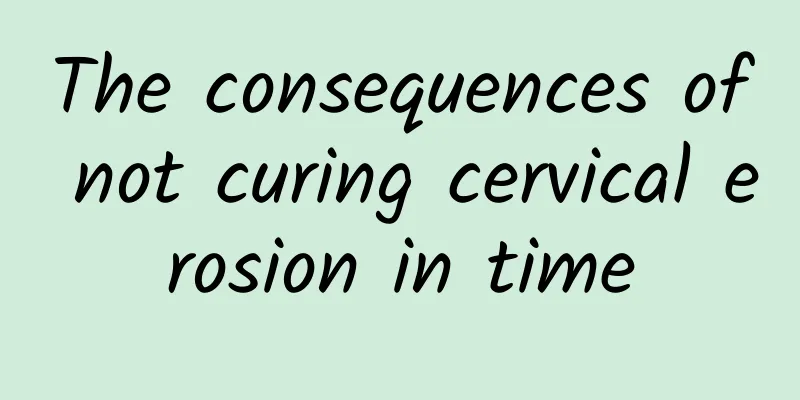Can I take anti-inflammatory drugs for cervical inflammation?

|
Cervical inflammation can be treated with anti-inflammatory drugs under the guidance of a doctor, but the specific medication should be determined according to the cause and condition. Common causes of cervical inflammation include infection, hormone imbalance, foreign body stimulation, etc. Treatment methods include drug therapy, physical therapy and lifestyle adjustments. 1. Drug treatment Drug treatment for cervicitis is mainly aimed at infectious causes. Antibiotics such as amoxicillin and cephalosporins can be used for bacterial infections, antifungal drugs such as fluconazole are suitable for fungal infections, and antiviral drugs such as acyclovir are used for viral infections. Medication should be taken under the guidance of a doctor to avoid abuse of antibiotics leading to drug resistance. 2. Physical therapy Physical therapy is suitable for chronic cervical inflammation. Common physical therapy methods include laser therapy, cryotherapy and electrocautery. These methods promote the growth of new healthy tissue by destroying the diseased tissue. The treatment effect is good but multiple treatments are required. 3. Lifestyle Adjustment Lifestyle adjustments are important for the prevention and recovery of cervicitis. Keep the vulva clean and dry, and avoid using irritating lotions. Wear breathable cotton underwear and change and wash it frequently. Pay attention to menstrual hygiene and change sanitary napkins in time. Avoid excessive vaginal flushing to maintain a normal balance of vaginal flora. 4. Diet adjustment Dietary conditioning can help enhance immunity and promote recovery from inflammation. Eating more fruits rich in vitamin C, such as oranges and lemons, can help improve immunity. Increasing zinc-rich foods, such as oysters and lean meat, can promote tissue repair. Avoid spicy and irritating foods to reduce inflammatory stimulation. 5. Regular inspection Regular gynecological examinations are important for early detection and treatment of cervical inflammation. It is recommended to have a gynecological examination once a year, including a cervical smear test. Women who have sexual activity should pay more attention to regular examinations to detect and treat cervical lesions in a timely manner. The treatment of cervicitis requires a personalized plan based on the specific cause and condition. Drug therapy is an important means, but it must be carried out under the guidance of a doctor. Physical therapy and lifestyle adjustments are also important auxiliary treatment measures. Maintaining good hygiene habits and regular gynecological examinations can help prevent and control cervicitis. If abnormal symptoms occur, seek medical attention in time to avoid delaying treatment. |
<<: How long does it take for threatened miscarriage to occur?
>>: Are polycystic ovaries polyfollicular?
Recommend
Most women will get cervicitis after pregnancy? It is better to know these common knowledge about cervicitis as early as possible
After getting married, women will consider having...
The harm of early uterine cysts
Early uterine cysts usually pose little direct ha...
Is it faster to lose weight by exercising on an empty stomach? Eat a banana and you will feel more powerful
Everyone knows that in order to lose weight, you ...
What is cervicitis?
Cervicitis is a common gynecological disease, whi...
Treatment of ovarian cysts with integrated Chinese and Western medicine
Ovarian cysts are common gynecological diseases i...
How to regulate irregular menstruation during pregnancy preparation How to regulate irregular menstruation
Some women have irregular menstruation during the...
Experts reveal the specific dangers of cervical hypertrophy
It is understood that many patients with cervical...
What should I pay attention to after painless abortion?
After an abortion, a woman's body is often th...
What should I eat to replenish my blood if I have uterine fibroids? What should I eat to replenish my blood if I have uterine fibroids and anemia?
Uterine fibroids are one of the common gynecologi...
Do you know who is suitable for abortion?
Do you know about abortion? Do you know who is su...
What are the common causes of vulvar leukoplakia in traditional Chinese medicine?
What are the common causes of vulvar leukoplakia ...
What are the symptoms of menopausal irregular menstruation? These 4 foods should not be eaten for menopausal irregular menstruation
Menopause irregular menstruation is a special per...
The surgical process of negative pressure aspiration for abortion
Artificial abortion refers to the termination of ...
Which hospital is reliable for abortion?
Nowadays, many women choose to end their pregnanc...
How many months should I take the medicine for ovulation bleeding?
How many months should I take the medicine for ov...









